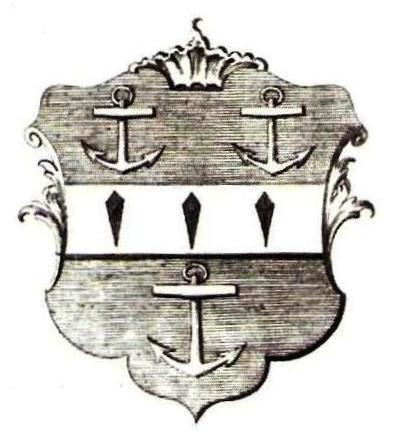
Navigation / Home / Family History / DNA Project / Web Links / Stories / Pictures
John Botwright Coat-of-Arms
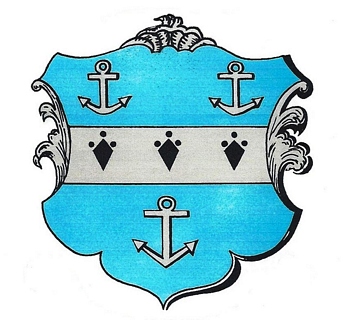 Artist Rendering of the John Botwright Coat-Of-Arms
Artist Rendering of the John Botwright Coat-Of-ArmsDownloadable version of Coat of Arms - Botwright
Downloadable version of Coat of Arms - Botwright - 1753
Downloadable version of Coat of Arms - Boatwright - 1965
Downloadable version of Coat of Arms - Boatright - 1965
This graphic is an artist rendering of a coat-of-arms description sent to Robert Guy Boatright by the research department of the Boston Public Library. In their letter of transmittal, the library provided two sources:
(1) "History of the College of Corpus Christi in the University of Cambridge", by Robert Masters; p. 43.
(2) "Proceedings of Cambridge Antiquarian Society", p. 77.
...in which was found
the statement "Coat-of-Arms granted to John Botewright, D.D (Master of the College of Corpus
Christi) about 1443 by Henry VI".
The description was:
John Botwright Coat of Arms from the book: "History of the College of Corpus Christi in the University of Cambridge", by Robert Masters; p. 43. The book was published in 1753 and includes a chapter on each of the early masters of the college including John Botwright.

NOTE: "Botwright" is the old english spelling of "Boatwright".
The John Botwright Chapter in the book, "History of the College of Corpus Christi in the University of Cambridge", published in 1753; includes an illustration of the Coat of Arms and an illustration of the John Botwright Tomb, located in the Church of St. Peter & St. Paul, Swaffham, Norfolk, England.
Notes from David Rains:
John Botwright, parents names not known, was born in 1400 in Swaffham, Norfolk County, England.
John died in 1474 and is buried in the Church of St. Peter and St. Paul at Swaffham, Norfolk. It is not known that John Botwright, D.D., is an ancestor of the Boat(w)right's in America. It is not known if he ever married.
John had a fellowship at the University of Cambridge before the year 1430, which he
probably resigned upon being presented to the rectory of Swaffham Market in Norfolk
County by his patron, the Duke of Bedford.
Note: John of Lancaster, 1st Duke of Bedford, (20 June 1389 - 14 September 1435) was the third surviving son of King Henry IV of England by Mary de Bohun, and acted as regent of France for his nephew, King Henry VI.
After his father's accession to the throne of England as Henry IV, John of Lancaster began to accumulate lands and lucrative offices. He was knighted on 12 October 1399 at his father's coronation and made a Knight of the Garter by 1402. Between 1403 and 1405 grants of the forfeited lands from the House of Percy and of the alien priory of Ogbourne, Wiltshire, considerably increased his income. He was appointed master of the mews and falcons in 1402, Constable of England in 1403 and Warden of the East March from 1403 to 1414. He was created Earl of Kendal, Earl of Richmond and Duke of Bedford in 1414 by his brother, King Henry V.
When Henry V died in 1422, Bedford vied with his younger brother, Humphrey, Duke of Gloucester, for control of the Kingdom. Bedford was declared Regent but focused on the ongoing war in France, while during his absence, Gloucester acted as Lord Protector of England. Bedford defeated the French several times, most notably at the Battle of Verneuil, until the arrival of Joan of Arc rallied the opposition. In 1431, Bedford had Joan tried and executed at Rouen, then arranged a coronation for the young Henry VI at Paris. Source: Wikipedia
From 1435 to 1474, John Botwright was rector of Swaffham, and compiled the Swaffham Black Book. This was an invaluable record of all the work done on the rebuilding of the church.
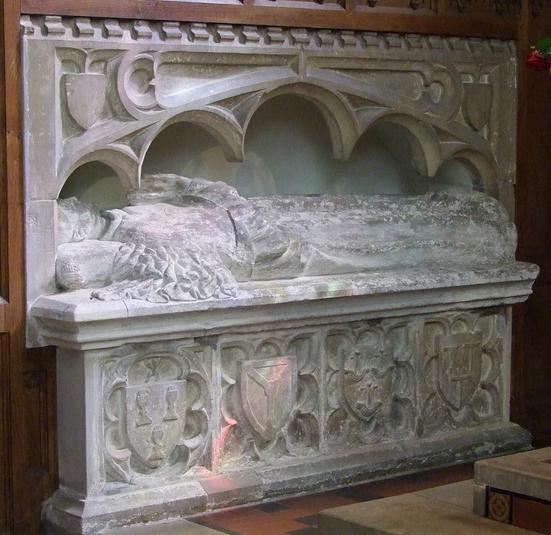
Among the monuments in the Church of St. Peter and St. Paul is an altar-tomb, with the effigy of John Botwright, D.D., who was master of Corpus Christi College, Cambridge, chaplain to Henry VI., and vicar of this church, when it was rebuilt. His office, faith, and name are shewn by rebusses on four shields, - an hieroglyphical mode of expression which was practiced among the Greeks and Romans, and is mentioned in the time of Homer. The first of the four shields has three sacramental cups and wafers to represent his office and priesthood; the second shield has the emblem of the Trinity to express his relationship to the College, it being a part of the arms belonging to it; a third shield bears three boats, or barges, and a fourth shield has three wimbles, or augurs, and is an allusion to his name.
John was unanimously chosen as Master of Corpus Christi College, University of Cambridge in 1443 during Feast of St. Mark the Evangelist after having been a "proctor" with the Master John Wolpit.
He was awarded the coat-of-arms about 1443 by King Henry VI when John was made Master of Corpus Christi College in which capacity served until his death in 1474.
John was made Chaplain to King Henry VI about 1447. Subsequently, King Henry VI presented John to Canonry in the church Clonfort in Ireland. John was an intimate friend of the King who gave him rich gifts and all the revenue of the tin and lead mines of Devon and Cornwall - appointed 16 Sep 1451 and re-appointed 20 Jun 1453.
John authored at least two books during his lifetime; preserved at Swaffham his "Black Book"
comprising "a terrier of lands belonging to the church, a list of benefactors with their obits,
and an inventory of vestment, plate, and books"; and among Corpus Christi College Munts his
"White Book", comprising a collection of accounts and other records relating to college
administration.
John's will was proved 07 Jun 1474.
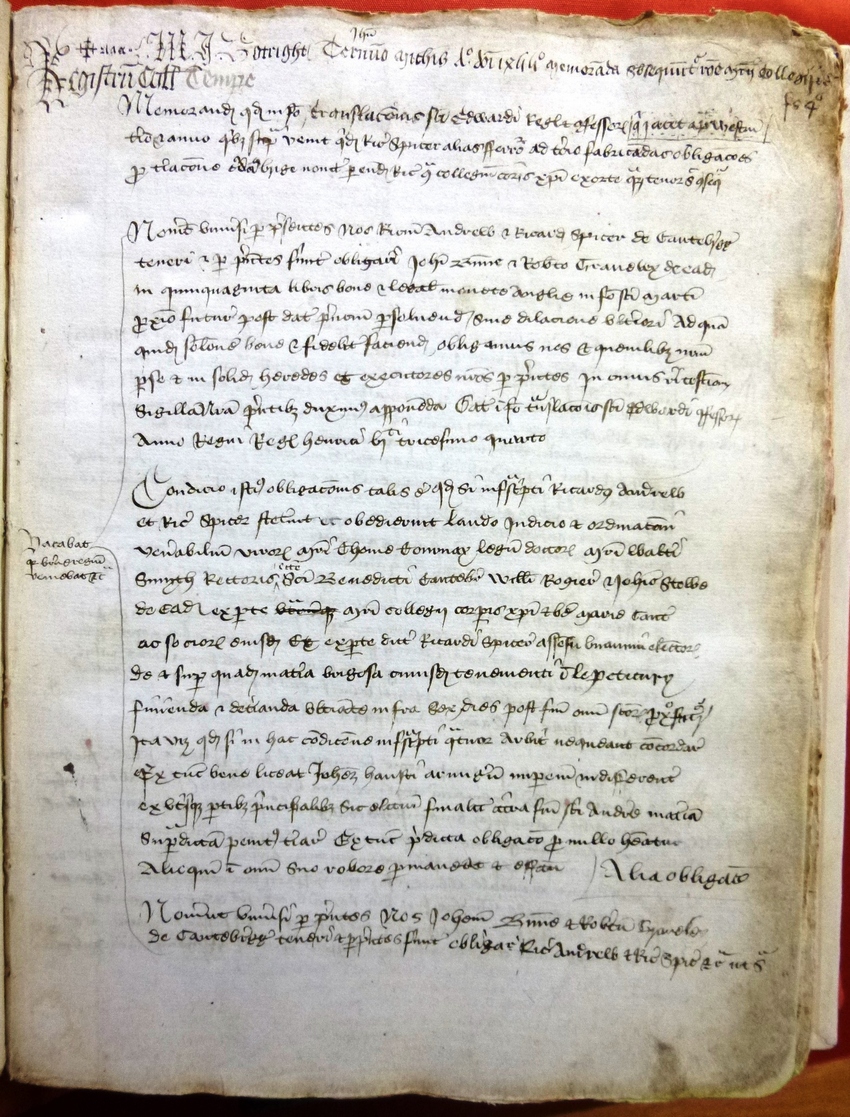
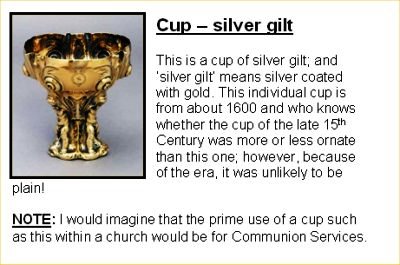 BY PERMISSION OF BRITISH HISTORY ONLINE:
BY PERMISSION OF BRITISH HISTORY ONLINE:
Simon Blake, by will dated 10th December, 1487, a cup of silver gilt, to the church of Swaffham,
formerly Mr. John Botewright's, rector of that church. Source: Barrie Blake
Calendar of Patent Rolls 1446-1452, p. 494 - September 16, 1451 Westminster - Appointment, during pleasure, of the king's chaplain,
Master John Botwright, professor of sacred theology, as controller of all the king's mines of gold, silver, copper, latten and lead
in the counties of Cornwall and Devon and all other mines wherein any metal containing gold and silver can be refined, to hold himself
or by deputies, taking the usual wages, fees and rewards for the costs of him and his men and servants, according to the profits.
By K. etc. Source: Calendar of the Patent Rolls 1446-1452 p. 494, Prepared under the superintendence of the deputy keeper of records, Henry VI.
Calendar of Patent Rolls 1446-1452, p. 533 - September 23, 1451 Westminster - Commission to Philip Courteney, knight, Master John Botewright,
Westminster. Roger Chanipernoun, Henry Fortescu, Robert Burton and Robert Glover, appointing them to take into the king's hands and keep the
gold, silver, copper and all metals purified or not and all mineral matter extracted from the king's mines within Devon and Cornwall from the
Annunciation last. Source: Calendar of the Patent Rolls 1446-1452 p. 533, Prepared under the superintendence of the deputy keeper of records, Henry VI.
Calendar of Patent Rolls 1452-1461, p. 110-111 - September 20, 1453 Westminster - Appointment, during good behaviour, by advice and assent of
the Westminster, council, of the king's clerk, Master John Botright, as provost and governor of all mines of the king, wherefrom any gold or
silver can be refined, in Cornwall and Devon, and grant to him of all mines of copper, tin and lead wherefrom any gold or silver can be refined
in the same counties, to hold himself or by deputies, rendering the tenth part of pure gold and silver and of copper, tin and lead, wherefrom
gold or silver can be refined, at his own costs; grant also to him of power to commit and let at farm the said mines to any farmers for a term
of twelve years from the date of these resents, at the rent of the tenth boll 'del le ore' of copper, tin and lead, wherein is any gold or silver,
saving to the king six ' shaftis' in the mines and (sic) Bereferreris to be worked by John or his deputies or servants to the king's use; grant
also to him for his wages of 40 (pounds). by the hands of the receiver there; but the king wills that he shall not dig under the houses or castles
of any lieges of the king; grant also to him that he may take wood and underwood for proving and purifying the metals, and the workmen and labourers
necessary, and that he may enjoy all liberties which the miners of Ryer have been wont to enjoy. By K. etc. Source: Calendar of the Patent Rolls
1452-1461 p. 110-111, Prepared under the superintendence of the deputy keeper of records, Henry VI.
last modified: May 22, 2016
URL: http://www.boatwrightgenealogy.com
Navigation / Home / Family History / DNA Project / Web Links / Stories / Pictures